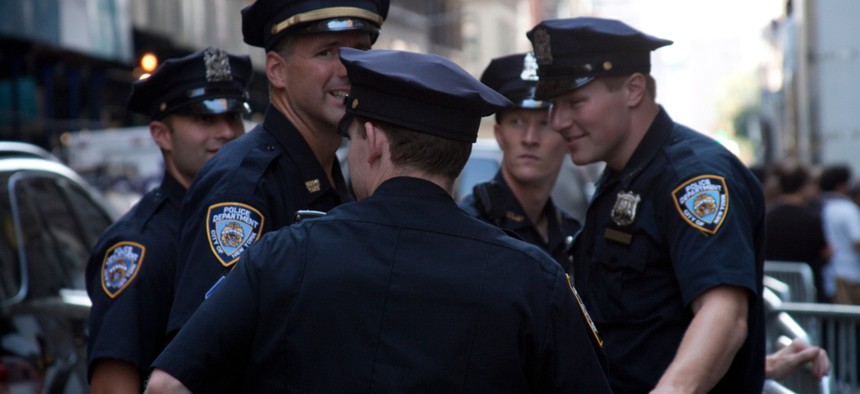Criminal Justice
Why everyone is suddenly talking about the NYPD gang database
Critics say the NYPD's gang database lacks transparency, raises civil liberties concerns.

NYPD officers Molina86/Shutterstock
The New York City Police Department has a list of 17,441 New Yorkers it thinks are gang-affiliated, but it used to be twice as long. That was one of the revelations from NYPD Chief of Detectives Dermot Shea, who testified before the New York City Council’s Public Safety Committee Wednesday.
It was the first time Shea was made to publicly shine light on the so-called gang database, according to New York City Councilman Donovan Richards, who chairs the committee. The list has recently come under criticism for putting suspects on it too easily and leaving them there for too long. But Shea defended the program at City Hall Wednesday, and in a Tuesday op-ed for the Daily News, as an important crime fighting tool. The NYPD has previously credited large-scale gang takedowns as a reason that New York City’s violent crime rate is at its lowest point in more than 50 years.
Richards worries the gang database has been shrouded in secrecy. “There are close to 18,000 people on this database and there’s not transparency or a process to know if you’re in the database,” he told City & State after the hearing.
The Criminal Group Database has been criticized by civil rights activists, who say it disproportionately targets African-American and Latino youth. Advocates protested outside police headquarters last October calling it a successor to the much-maligned practice of stop-and-frisk. Earlier this year, the Legal Aid Society led a campaign encouraging New Yorkers to file Freedom of Information Law requests to find out if they’re in the database. The groups sent a letter to Richards in February encouraging him to hold a public hearing on the issue.
On Monday, the left-wing website The Intercept reported that the database had swelled under Mayor Bill de Blasio. Shea countered the story’s claims at Wednesday’s hearing, saying that the department had cleared nearly half the names from the database after a four-year review. It was not immediately clear if NYPD detectives still had access to the names that used to be on the list.
Richards praised the NYPD for arresting violent offenders, but said he feared the inclusion of innocent New Yorker’s names in the database, thinking it could lead to surveillance, or wrongful arrest during large-scale “gang takedowns.”
.@NYPDDetectives says 95% of the #NYPD's gang database are people of color. Says the breakdown is "unfortunately extremely disparate."
— Zolan Kanno-Youngs (@KannoYoungs) June 13, 2018
Richards hopes to work with the NYPD to craft legislation that could bring more transparency to the database. Laws regarding the NYPD are often contentious – the Right to Know Act, which increased transparency in arrests, was debated for years and narrowly passed in December 2017. But Richards said NYPD leaders suggested they would be open to a new law.
“The main goal is to make sure that innocent people aren’t in this database,” Richards said.

NEXT STORY: After a milestone, lack of progress